Although car dashboard warning lights have changed as technology has evolved – electric vehicles (EVs) have introduced a new range of lights that drivers need to be aware of.
As more innovation is introduced to the latest range of electric cars, the RAC have profiled everything you need to know about electric car warning lights.
Car dashboard warning lights
However, no matter the vehicle, it is important to know what car dashboard warning lights mean – and what you need to do.
The warning lights on your dashboard follow a traffic light colour system:
- Green: the system is working correctly or is currently in use
- Yellow: something is not working correctly - take extra care and check it out as soon as possible
- Red: there is a serious, and potentially dangerous problem - stop driving as soon as it is safe to do so
Are you looking for a specific light you are seeing on your dashboard? The RAC has a complete guide to all car dashboard warning lights.
Common dashboard warning lights
Whether you’re driving an ICE or electric vehicle, these are the common dashboard warning lights you need to be aware of.
Brake warning light
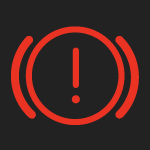
.jpg)
Also known as the brake system warning light, parking brake warning light or brake fluid warning light.
If this red light remains on after you fully release the parking brake, or comes on when you’re driving, it may indicate that the brake fluid level is low. Unless you know how to check your brake fluid levels yourself, this will be one for the professionals.
If the ABS warning light is also illuminated this signals that the braking system has malfunctioned, and your brakes may not work properly. In this case the Electronic Brake Force Distribution (EBD) warning light may also be illuminated.
You shouldn't risk driving should this warning light appear. The brakes are one of the most important safety features of your car, so it’s important to act immediately when you see this red warning light.
Pull over and stop as soon as it’s safe to do so - keep your speed low and avoid braking suddenly. Unless you know how to check your brake fluid levels yourself, this will be one for the professionals, so get yourself to a garage.
Don’t risk driving when your brakes are not functioning properly: call for recovery if you have a breakdown cover policy.
If you need assistance, you can call the RAC on 0330 159 1111 whether you are a member or not.
Service, repair or MOT?
You can trust the RAC with our local approved garages and NEW mobile mechanics.


Engine management light
.jpg)
Although normally associated with petrol and diesel vehicles, EVs also have an engine management light.
Also known as a ‘check engine’ light, it has been a long-standing warning that has appeared in cars for decades. Sometimes the phrase is used instead of the logo – and can appear in any of the colours used on the dashboard depending on the severity of the warning.
This doesn’t warn the driver of a specific problem – but rather it signifies that there are potentially several issues with the ECU (engine control unit).
When the engine management light is illuminated it’s often accompanied by tell-tale signs that the engine is not working properly, such as a lack of power or stuttering as you press the accelerator.
Should the warning sign be yellow, keep driving as normal but get your car to a garage as soon as possible to diagnose the issue. If the yellow light flashes, then this could mean handling problems or engine misfiring – and the issue is even more pressing to get serviced and sorted.
The red light means there is a significant issue – and you should contact your breakdown provider immediately.
Use our search tool to find your nearest RAC approved garage to book your next MOT. Or, if you have RAC Breakdown Cover, call for recovery.
Airbag warning light

Also known as the supplemental restraint system (SRS) warning light.
When this light goes red it means that at least one element of the airbag safety system is not working correctly: either the airbag system itself; the front passenger occupant classification system (which detects the front passenger’s weight and position in order to safely deploy the airbag); or the seat belt pretensioner system, which tightens the belt in the event of a crash.
If the airbag system is not working properly, it may not go off in a crash - or in some cases it could even deploy unexpectedly and cause a crash.
Either way, the airbag system is an incredibly important safety feature of your car so if this light comes on please get it checked out immediately.
Power steering warning

This is also known as the EPS or EPAS warning light. This indicates that there’s a problem with the power steering.
For electric powered systems, this problem could be as simple to fix as rebooting a computer. Find a safe place to stop and try turning the car off and back on again after 30 seconds. If the light stays on you should take your car to get checked as soon as possible.
You can but if the power steering system fails you will notice that the car is harder to manoeuvre, and you should take extra care – it could be dangerous to drive at high motorway speeds without power steering assistance.
Tyre pressure warning
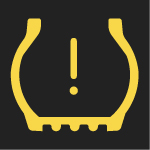
Many modern vehicles are now fitted with tyre pressure monitoring systems that will let you know when the pressure falls. This could happen over time, or it could be because of a puncture.
You can still drive with this warning light; however, you should drive with extra care and aim to top up with air at the next opportunity. Low tyre pressure can cause unsafe driving conditions so reduce your speed, and try to avoid braking suddenly or making any violent steering manoeuvres.
Most petrol stations and garages will have an air compressor you can use to check your tyre pressure. Top up the air in the tyres according to the vehicle manufacturer specification in your owner's manual.
If you have a puncture, watch our video to learn how to change a tyre in 10 simple steps.
ESP warning light

Electronic stability problem (ESP), also called Electronic Stability Control (ESC), this warning light indicates a problem with traction control.
If it’s flashing it means the ESP system is intervening – for example, if you’re driving on a slippery road. If the light stays on it means the ESP system is not working properly.
The ESP light will light up with the word ‘OFF’ if the system has been deactivated, in which case you may have inadvertently turned it off.
To check, try stopping and restarting the engine. If the light remains on after restarting, get it checked at a garage as the ESP system is an important safety feature.
Brake pad warning light

If this symbol shows up it means a sensor has detected your brake pads are too thin.
This warning light should come on before the brake pads become dangerously thin, so you have time to get them changed. You should replace as soon as you can though, as if they wear out completely it could be extremely dangerous.
For more information read our guide to brake pads.
EV warning lights
With the UK government’s 2030 ‘Road to Zero’ strategy in full swing, the EV revolution is taking over roads across the country.
Now that the ban on the sale of new petrol and diesel cars has been brought forward to 2030, the announcement has made UK drivers think about the impact their car has on the environment.
And if you’re now driving an electric car, or are thinking about buying one as your next vehicle, these are the warning lights you will see on an EV.
As explained above – there are three warning light colours that demonstrate the severity of what is happening to your car. As well as having a green warning light, showing the system is working correctly – in EVs, they can also appear blue or black.
Ready to drive

Due to the relative silence from EVs in comparison to ICE vehicles when starting, this light is simply there to inform the driver. If the light isn’t displayed – the engine is not on. However, if the engine fails to start, inform the dealership you purchased the car from.
Eco mode

An increasingly popular feature in modern electric vehicles, this light informs the driver that the car will adapt to your driving style in order to get as many miles out of the battery as possible. There is no danger to anything going wrong with the vehicle.
General fault
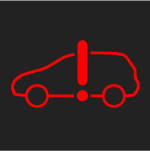
This warning light signifies that there could be one or more problems with the car – and that you should seek help from a garage as soon as possible.
Due to the increased amount of technology added to an EV in comparison to its fuel-powered rivals – this warning light is often linked to something relating to how the vehicle moves, turns, or brakes.
Limited power

This tortoise symbol lets the driver know that there is an issue with the car – and you should seek help as soon as possible.
It is important to get it checked at a garage in order to fix the problem.
Similar to the above warning light – although it doesn’t inform the driver of one single issue – it lets them know that there could be a variety of faults.
Pedestrian alert

Although this is now appearing in both EV and ICE vehicles, this warning light appears on a dashboard in order to prevent an accident from happening.
The light informs the driver that they must brake immediately in order to avoid hitting a pedestrian.
Low battery/charging needed
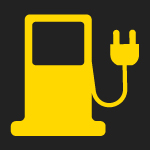
If you are driving along, and this warning light – it is a sign that you need to recharge your EV. In most EVs you will get a warning at 12% and then a red warning at 5% charge.
In hybrid vehicles, there will be a similar ‘battery charge level’ warning light that will show that the electric part of the engine will need recharging.
General electrical fault
.jpg)
This warning light lets the driver know that there is a problem with the car’s electrical system. Depending on the colour of the light – this could be a minor or major issue.
Should this warning light appear, it is important to get it checked at a garage in order to fix the problem.
Serious electrical fault
.jpg)
The red version of the above warning light means that you should stop the car immediately and seek help.
Should you continue, the car could shut down and damage the power output of the vehicle – causing further warning lights to appear on the dashboard.
Master warning
.jpg)
This is the more serious version of the ‘General fault’ warning light.
This red exclamation mark can signify a wide variety of problems – all of them that can show the car has a severe fault
12V battery charge
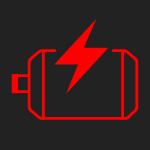
No matter the vehicle type, there is a 12-volt battery that is used when the car is turned off. Should the charge be low – then the vehicle may not start.
EV operation indicator

This dashboard light only applies to hybrid vehicles – and shows the driver that they are currently running the electric-only mode.
E-mode/EV-mode

This also only appears on hybrid vehicle dashboards – and shows that the driver has driven too aggressively to use the EV part of the engine. This means that the electric power wont recharge fast enough.
This means that the driver will need to driver slower in order to recharge the battery.

Breakdown Cover from £6.75 a month
Plus £150 of driving savings!
*£6.75 a month for Basic. ^For all named members with new Extra or Complete. Included in Family cover as standard. Excludes Basic. Ends 02/08/24, 7am.

Auto-glide control indicator
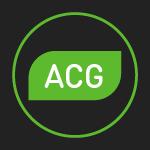
When a driver notices this on the dashboard, it shows that the car is reducing the deceleration force, making the vehicle coast to increase fuel economy.
The driver will not need to adapt the driving style or stop the vehicle.
Battery temperature warning
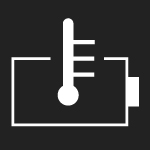
Although this does appear in all vehicle types, the battery temperature warning light shows that there is a major issue with the car battery.
If the car’s cooling system fails, then the temperature of the battery can reach dangerous levels.
This can result in a fire, engine failure and further major faults.
A driver should look for immediate assistance to solve the issue.
External sound system issue
.jpg)
An external sound system is used by EV and hybrid drivers to alert pedestrians and other road users that they are nearby – and avoid any accidents.
If this warning light appears, then this system is no longer working.
Regenerative brake system warning indicator

This indicator signals a significant problem with your EV – and often comes in a red or amber light.
The warning stems from an issue with the electronically controlled brake system fault indicator and the parking brake and brake fluid warning indicator.
Often two separate lights, however, they will be next to each other on the dashboard.
It is imperative to get it checked at a garage as the two systems are important safety features for your EV.

Breakdown Cover from £6.75 a month
Plus £150 of driving savings!
*£6.75 a month for Basic. ^For all named members with new Extra or Complete. Included in Family cover as standard. Excludes Basic. Ends 02/08/24, 7am.









